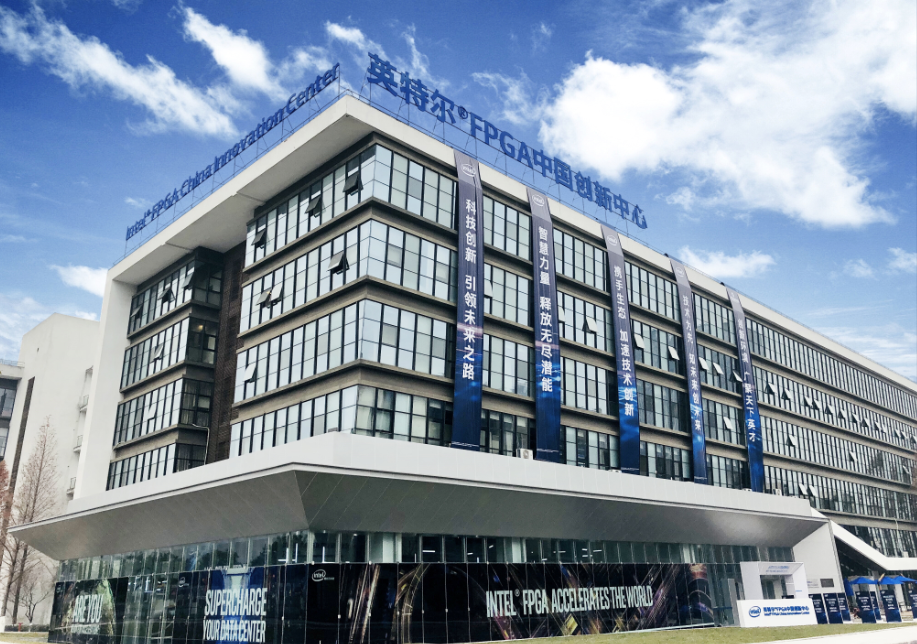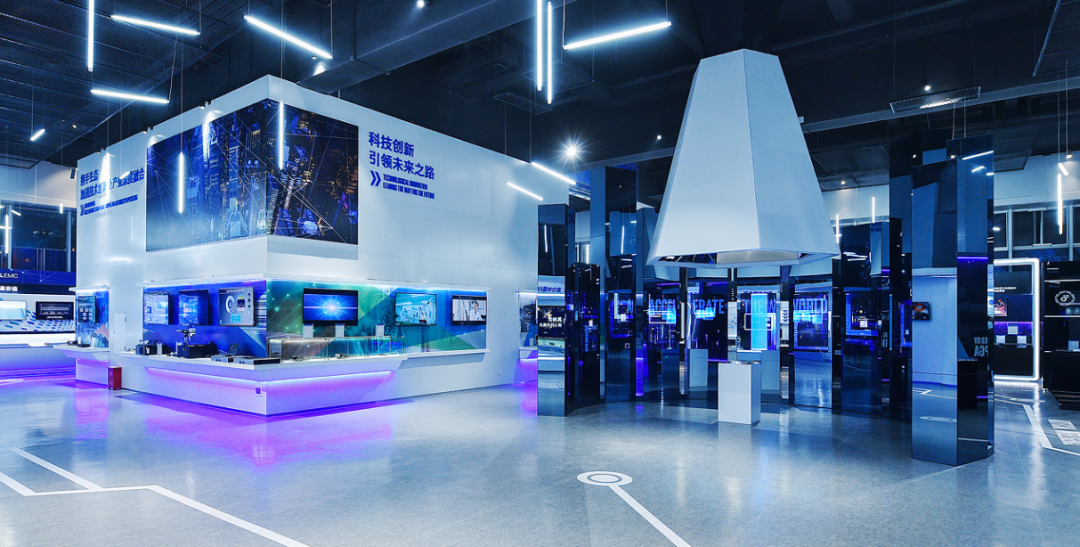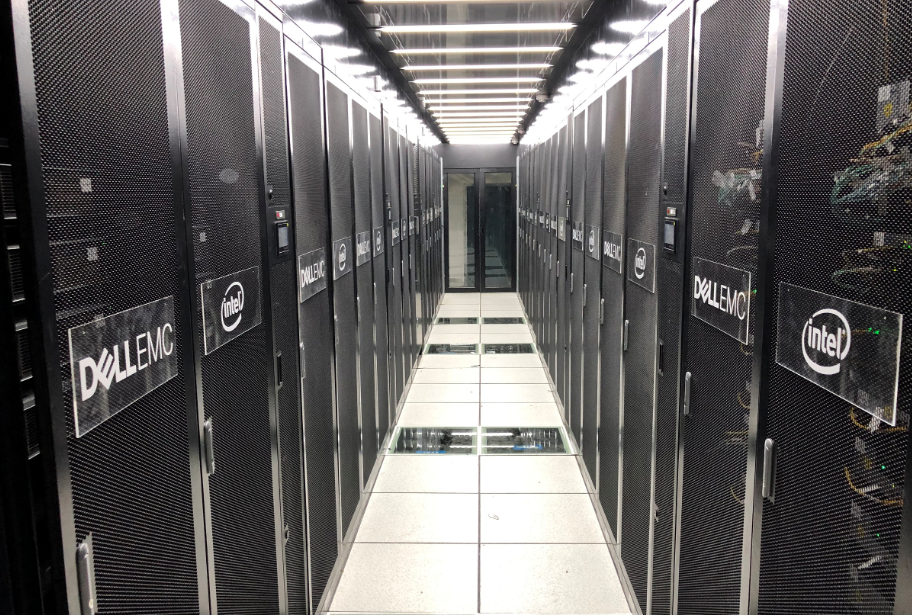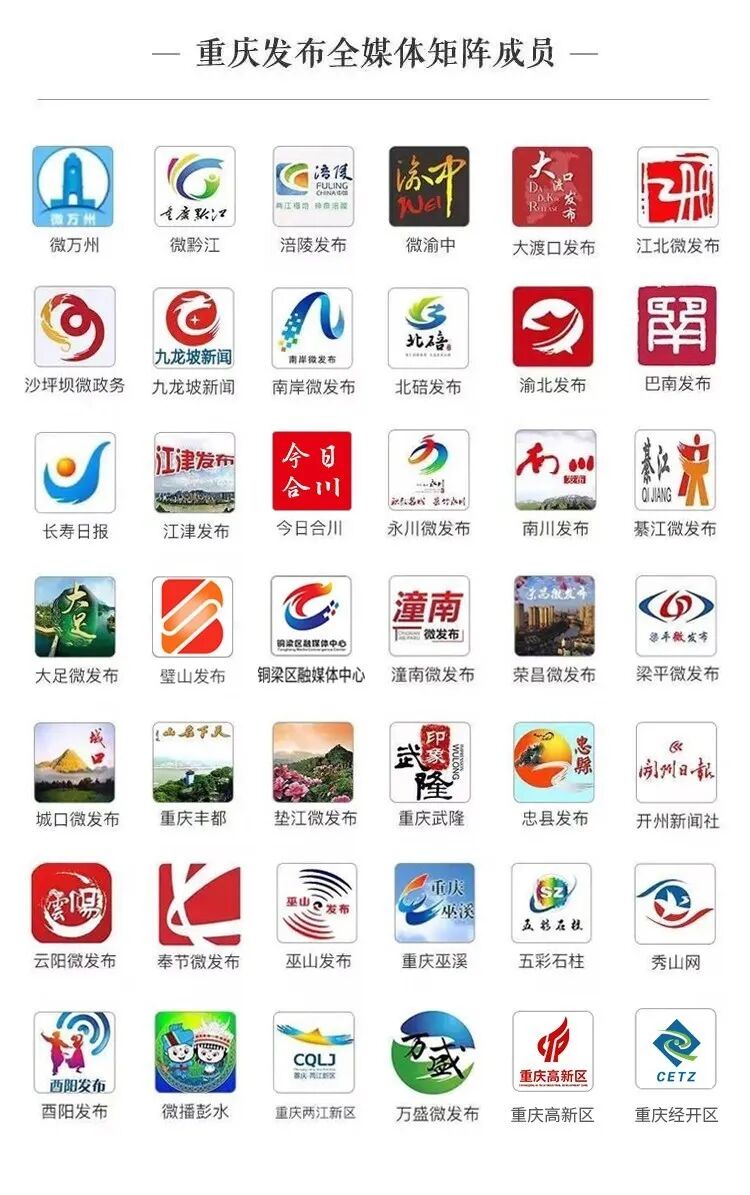
More than a year ago, the largest FPGA innovation center in the world and the only one in Asia—Intel FPGA China Innovation Center (hereinafter referred to as the “Innovation Center”)—was unveiled in the Xiyong Microelectronics Park of the Western (Chongqing) Science City. This is a strategic project jointly planned by Intel China and Intel’s global product division, aimed at creating a nationally influential technology innovation center leveraging Intel’s years of leadership in the technology industry and its global ecosystem of partners.
What makes this innovation center special? How does it add new momentum to technological innovation? Over the past year, how has it contributed to the innovative development of Chongqing? To address these questions, we spoke with Zhang Rui, General Manager of the Intel FPGA China Innovation Center, and other responsible personnel.


Intel FPGA China Innovation Center Building
Building a Comprehensive FPGA Talent Training System
Since its launch in December 2018, the Innovation Center has partnered with operational partners such as Haiyun Jiexun and strategic data center partner Dell to carry out a series of initiatives, achieving significant progress and results in talent training, ecosystem construction, innovation incubation, high-end industry summits, competitions, and ecosystem partner project showcases.
In August last year, the Innovation Center officially launched a comprehensive FPGA talent training system. To further consolidate students’ FPGA theory and technology, the Innovation Center also introduced the “FPGA Examination and Certification”. Students who pass the exam can obtain corresponding level certificates, confirming their standardized training through the Innovation Center and their possession of relevant professional knowledge and skills. The COVID-19 pandemic did not hinder the talent training efforts of the Innovation Center. “At the beginning of the pandemic, we mobilized resources and quickly transformed offline courses into online training courses through recorded videos and audio, officially launching on March 5, free for everyone, including students, developers, and related professionals. As of last week, our online course enrollment has reached 4,000, with over 10,000 views of the course videos,” said Zhang Rui, General Manager of the Intel FPGA China Innovation Center. Additionally, the Innovation Center has launched a series of books covering cutting-edge theories in the industry and advanced Intel FPGA technologies, which are now available on major platforms such as JD.com, Dangdang, and Taobao. In the future, the Innovation Center will continue to expand the coverage of talent training and collaborate with universities and ecosystem partners to cultivate outstanding FPGA talent and conduct technical application research, creating joint innovation laboratories for FPGA in universities, and plans to integrate FPGA training into university curricula, breaking down the barriers between theory and practice. “We want to create a complete FPGA ecosystem, which cannot be separated from talent cultivation. This way, we can provide talent for attracting investment companies and also support local university students with skills training, both complementing each other,” said Zhang Zhengyu, CEO of Haiyun Jiexun Technology Co., Ltd., the operational partner of the Intel FPGA China Innovation Center. Intel FPGA Innovation Exhibition Hall“Cloud Acceleration” Solving Enterprise Pain Points
Intel FPGA Innovation Exhibition Hall“Cloud Acceleration” Solving Enterprise Pain Points
In addition to comprehensive FPGA talent training, the Innovation Center launched the Intel FPGA Cloud Acceleration Center on March 25, 2019. The Cloud Acceleration Center features 115 FPGA programmable acceleration cards based on Intel® Stratix® 10 and Arria® 10, over 100 Dell EMC R740 servers, management and storage servers, as well as network and security devices, with hardware facilities worth tens of millions. Combined with Haiyun Jiexun’s technology and solutions in the open-source cloud field, it provides FPGA cloud hosts for innovative enterprises, startups, universities, and research institutions nationwide, enabling cloud-based FPGA acceleration for development, testing, and verification, and simplifying developers’ access to underlying general-purpose devices through the underlying hardware support platform of FPGA. Zhang Rui explained that the Cloud Acceleration Center addresses two pain points for enterprises: high costs and high technical barriers.● Addressing Cost Issues
For startups, purchasing equipment without knowing its performance is a significant challenge. Besides the high costs, they also need to hire specialized technical personnel who can use the equipment. However, once enterprises apply and are approved by the Innovation Center, they can access platform resources worth millions or even tens of millions for free through cloud access, directly solving cost issues.
● Addressing High Technical Barriers
Secondly, the Innovation Center provides free FPGA underlying hardware support platforms and online technical support from engineers, solving the high technical barrier issue. Especially for enterprises that have never used FPGA, they can directly place algorithms and product verifications on the platform remotely, greatly improving efficiency. During the pandemic, the various technical supports provided by the Intel FPGA Cloud Acceleration Center played a significant role, with all work accessible via cloud, allowing clients to obtain services without leaving their homes. So far, the Innovation Center has supported nearly a hundred innovative enterprises through cloud access. For example, in the financial acceleration sector, enterprises achieved low-latency performance improvements by two orders of magnitude compared to traditional solutions; in the data center and big data sector, it accelerated massive data analysis and modeling, significantly enhancing the efficiency and accuracy of enterprise recommendation systems; in the computing acceleration sector, the validation effects of data acceleration processing applications for irregular structured databases were remarkable. Zhang Rui further explained, “Currently, the country has proposed to accelerate the construction of new infrastructure. Among them, information infrastructure represented by 5G, artificial intelligence, and data centers is an important component of the new infrastructure. FPGA, with its programmability, low latency, and low power consumption characteristics, is precisely one of the core technologies needed in these fields. Since its opening, the Intel FPGA China Innovation Center has received strong support from various levels of units, including the Chongqing Municipal Government and Xiyong Microelectronics Park, and has made significant progress and social impact in collaboration with partners. In the future, under the broader context of digital transformation, intelligent upgrading, integrated innovation, and the construction planning of the Western (Chongqing) Science City, the FPGA Cloud Acceleration Center will continue to focus on accelerating and incubating innovative teams and projects.
Accelerating Innovative Enterprises to Settle in Chongqing

Intel FPGA Cloud Acceleration Center
In 2019, the China International Intelligent Industry Expo Organizing Committee, in collaboration with Intel, the Chongqing Xiyong Microelectronics Industrial Park, Intel FPGA China Innovation Center, Beijing Haiyun Jiexun Technology Co., Ltd., and Intel Innovation Accelerator, hosted the 2019 Smart Expo FPGA Intelligent Innovation International Competition, which set up four sub-regions in Beijing, Shanghai, Wuhan, and the Guangdong-Hong Kong-Macao Greater Bay Area, attracting over 400 innovative teams from 11 countries worldwide to participate. The competition offered a prize pool of 2.6 million yuan to discover and encourage outstanding innovative teams globally and promote industrial integration and innovation. To further promote FPGA ecosystem construction, the Innovation Center has also launched a “Special Acceleration Plan” aimed at providing incubation areas for related intelligent enterprises, including office areas, meeting areas, experimental areas, and tea break areas. At the same time, the Innovation Center will provide multi-faceted support measures for enterprises:● Hardware and Software support with Intel technology to help overcome technical challenges; ● Policy support to lower the entry threshold for the Xiyong Microelectronics Industrial Park and enjoy more technology policy support services; ● Market support to develop exclusive brand building plans for resident enterprises, provide opportunities for participation in Intel ecosystem market exchange activities and market sales, and for technology enterprises rooted in the education sector, assist in introducing Intel ecosystem and partner university resources to win more development opportunities.
Prevention Tips
In some relatively closed public places, such as public transportation, elevators, and crowded public areas, it is recommended to wear masks, as you may come into contact with individuals whose infection status is unclear.
What Everyone is Watching
May 25, 0—24 hours Chongqing epidemic report: 0+0+7+117No need to wear masks at work or school! But you must meet these conditions…Chongqing vocational classification exam scores can be checked on June 3, and free online consultation for volunteer filling starts tomorrow
Source: Chongqing Release
Text: Huang Jun, Zhang Yanan (Intern)
Images: Intel FPGA China Innovation Center
Editor: Yang Xiwen
Statement: Except for original content and special instructions, the text and images of the forwarded articles are sourced from the internet and major mainstream media. Copyright belongs to the original author. If you believe the content infringes copyright, please contact us for removal.

Copyright: Chongqing Municipal Government News Office
Platform Support: People’s Daily Online
